A closet is a vital space in your home. It provides much-needed storage for clothing, accessories, and various other items, but it can be so much than storeroom, especially if it’s a walk-in closet that offers ample space.
It can be a private dressing room where you can model your attire and have your own “catwalk”. It can be a personal haven; a space where you can relax, unwind, and enjoy a little respite. If you sing or play an instrument, a closet could even serve as a recording studio, or just a place where you can practice without interruption.
If you’re thinking about using your closet as more than just a storage space, there may be something that’s holding you back: noise. If outdoor noise or sound from surrounding rooms in your home floods your closet, it likely doesn’t offer the “relaxing” atmosphere that you’re hoping for.
If you’re thinking about using it as a makeshift music studio, you may be concerned that your performances will disturb the spaces that are adjacent to your closet.
However if you intend on using your closet, if noise is an issue, you may be wondering if there’s a way that you can soundproof it. Fortunately, there are, and many options don’t require a significant financial investment.
With some ingenuity, a few supplies, and a little bit of time and elbow grease, you can successfully soundproof your closet.
Before setting out to soundproof your closet, it’s a good idea to take the time to familiarize yourself with different kinds of sound. There are two primary types of noise and they may require different soundproofing techniques; which is why it’s important to understand the difference between each type.
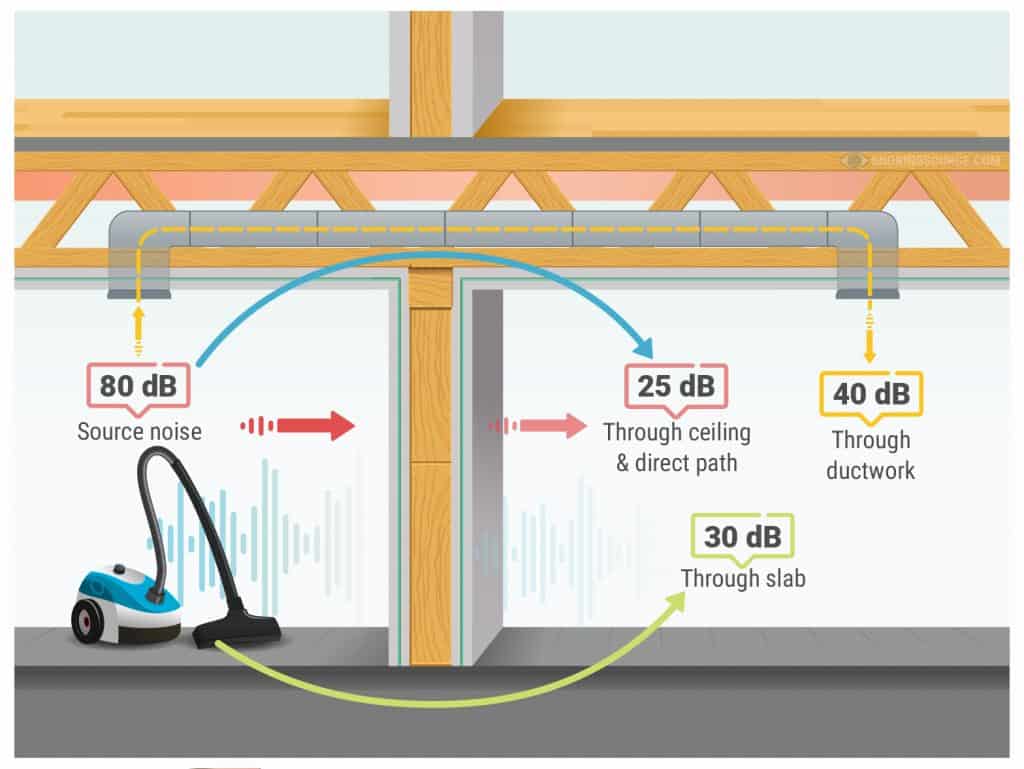
Airborne noise is the type of sound that usually comes to mind when most people think of noise. Airborne noise is defined as any kind of sound that is transferred through the air; examples include speech, music, and the sounds of a television or radio.
With this type of noise, the soundwaves that an object creates are picked up and carried by the air until they eventually collide with a solid structure; a wall, a door, or the ceiling, for example. This collision creates vibrations, and those vibrations are carried through the solid object to the area behind it, such as the adjacent room.
It’s because of this collision of soundwaves and transmission of vibrations that you can hear people in other rooms talking while you’re in your closet, or people in other rooms can hear you hear you speaking, singing, or playing an instrument (whatever the case may be) while you’re in your closet.
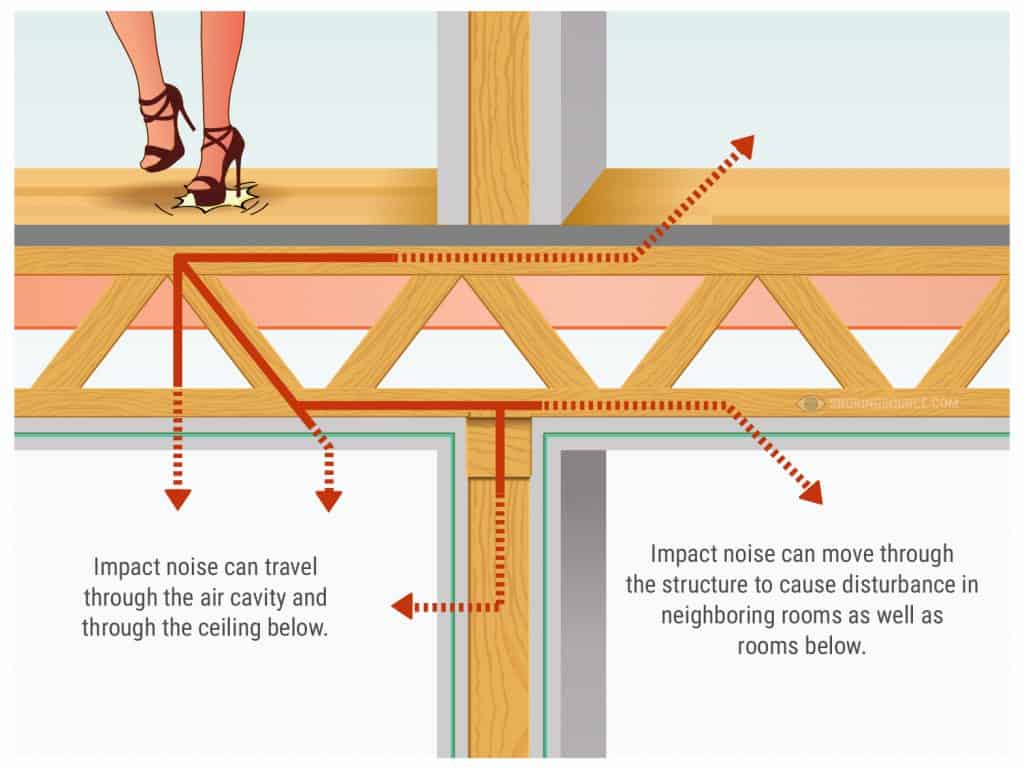
The second kind of sound is impact noise. It’s a type of structure-borne noise and it happens when an object makes an impact with another object. This impact creates sound, and that sound creates a vibration, which leads to the transmission of sound through the structure that was impacted.
Examples of impact noise include footsteps on a floor that can be heard in the space below, or banging on a wall that can be heard in the neighboring room. Impact noise is also referred to as structure or structure-borne noise.
To pinpoint the type of sound that you want to eliminate, place your hand against the surface where you hear noise coming from. If you feel the surface vibrating, then the sound is structure-borne; if there is no vibration, the sound is airborne.
Now that you know the difference between the two types of sound, let’s discuss different soundproofing techniques for your closet. Below, we provide some relatively simple and effective ways to prevent the transmission of both airborne and impact noise so that you can turn your closet into a quiet space.
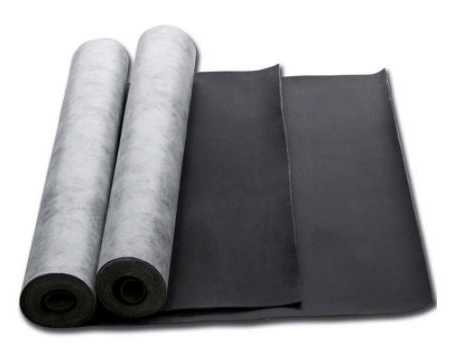
Mass Loaded Vinyl (MLV) is a thick, yet flexible sheet of material. Typically, it is permeated with small metal pieces, which increases the mass of the material. Because of its density, MLV is an ideal type of soundproofing material, as it blocks soundwaves, preventing them from passing through the surface it has been applied to.
To install the material, measure the space where you intend on placing it and cut the MLV to size. Position the cut material over the surface, ensure it is straight, and then, using nails, staples, or screws, secure it in place.
If you want to maximize the soundproofing capabilities, apply Green Glue to the surface before hanging the MLV. Green Glue is a soundproofing compound that isolates noise, so using it in combination with the MLV will provide an extra layer of noise prevention.
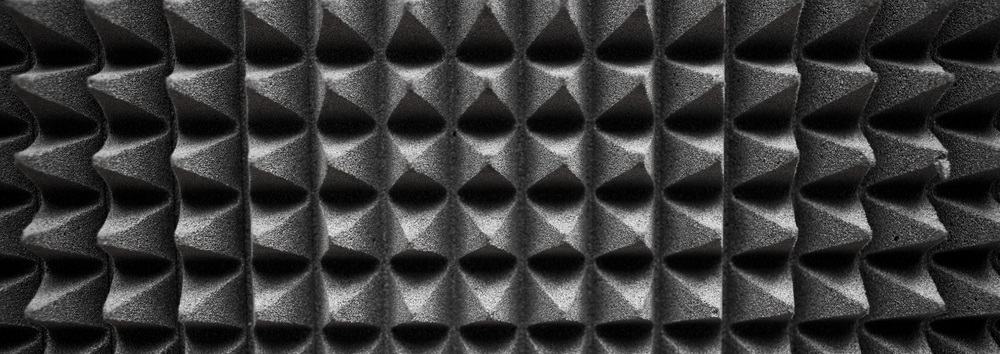
If you want to prevent sound from traveling out of your closet, acoustic foam panels can help. This material dissipates and minimizes the amplitude of soundwaves, which prevents sound from traveling through the surface that it’s applied to; it also helps to reduce the amount of noise that travels into the space, and it enhances the sound within the room, too, which is why it’s often used in recording studios and movie theaters.
Acoustic foam panels are available in an assortment of sizes and colors. To install it in your closet, measure the space where you want to hang it and cut the material as necessary.
Prior to hanging, apply Green Glue to the back of each section. Doing so will increase the soundproofing abilities of the foam. Position the panels in place until the surface is covered. Because it’s available in different colors, for aesthetic appeal, try creating an interesting pattern with the panels.
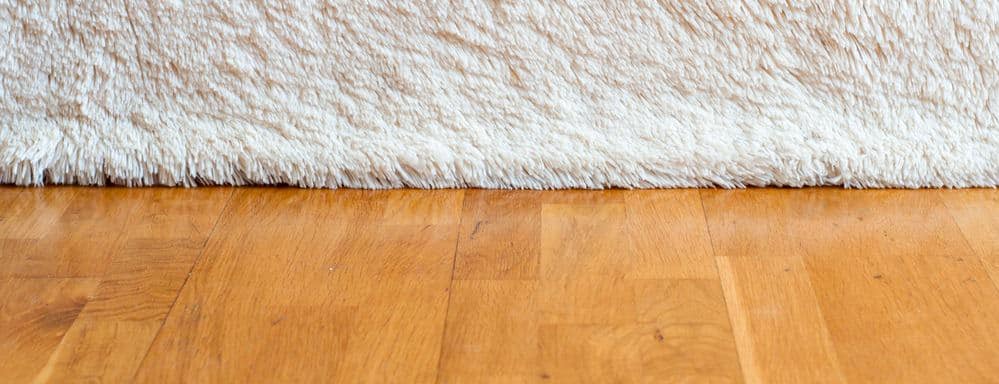
If the floor of your closet is wood, tile, laminate, or any other hard material, try covering it with rugs or carpeting. Soundwaves easily bounce off and disperse through hard structures, so placing a rug or carpet on the floor can help to minimize both the transmission of sound, as well as echo.
For the best results, use thick carpeting or rugs. The denser the surface the more the soundwaves will be absorbed. To really maximize the results, install soundproof underlayment.
Available in a variety of materials, including cork, foam, felt, and rubber, this underlayment material is designed to absorb and deflect soundwaves. In addition to minimizing sound, an underlayment will also help to improve the suppleness of the floor, making it feel more comfortable underfoot.
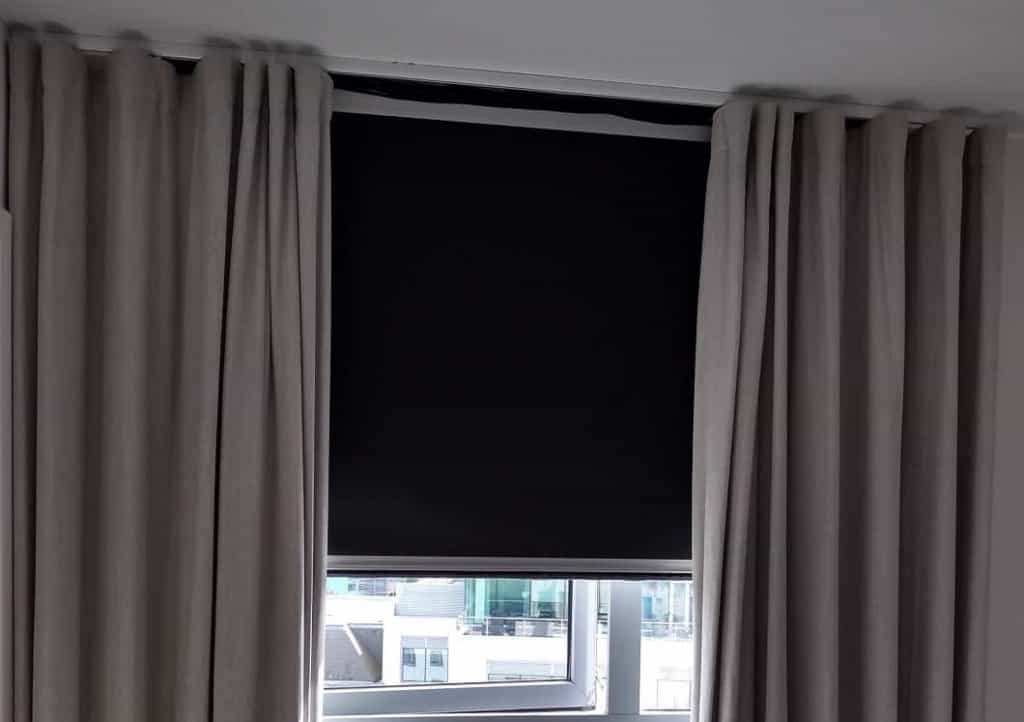
Closet doors are often a source for sound penetration. That’s because they tend to be hollow and made of manufactured materials. If sound is passing through your closet door, sound deadening curtains are a simple, affordable, and effective solution.
Made of thick fabrics, sound deadening curtains absorb noise and minimize the amount of sound that enters and exits a space. There are a wide variety of soundproof curtains to choose from, including different sizes, colors, and even designs and patterns, so in addition to reducing noise, they can enhance the visual appeal of your closet.
Make sure to take accurate measurements of the doorway so you can purchase the appropriate size. You’ll also need to purchase an aptly sized curtain rod. Install the curtain rod on the wall above the doorway and drape the curtains from it.
If you want to step up the sound reduction, double up on the curtains. Use a double curtain rod and hang two layers of soundproof curtains over one another.
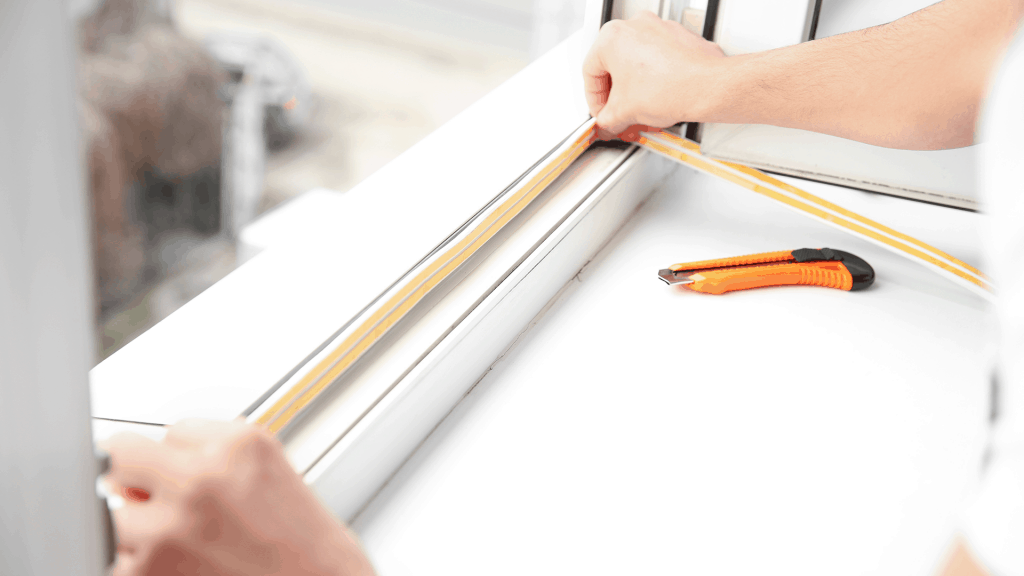
Use weather stripping to minimize the sound traveling through the closet door, as well as any windows you may have in the space. Usually, gaps form between the space where a doors/windows and walls meet. These gaps serve as a direct line of sound transmission. To seal them up and make the space quieter, use some weather stripping.
Measure the sections around the door and/or windows where you’ll be placing the weather stripping. Cut sections of the material accordingly. Remove the protectant that covers the adhesive backing of the weather stripping and carefully position it in place. After installing, make sure to apply pressure along each piece to ensure that it's properly secured.
Whether you’re looking to create a space where you can enjoy sorting through your wardrobe, or you want to make a peaceful sanctuary just for you, or you plan on turning the room into a place where you can practice music; whatever the case may be, if you’re looking to soundproof your closet, the above-mentioned techniques will certainly help to reduce the noise that travels in and out of the space.

Snoringsource.com is a participant in the Amazon Services LLC Associates Program, an affiliate advertising program designed to provide a means for website owners to earn advertising fees by advertising and linking to amazon(.com, .co.uk, .ca etc) and any other website that may be affiliated with Amazon Service LLC Associates Program.